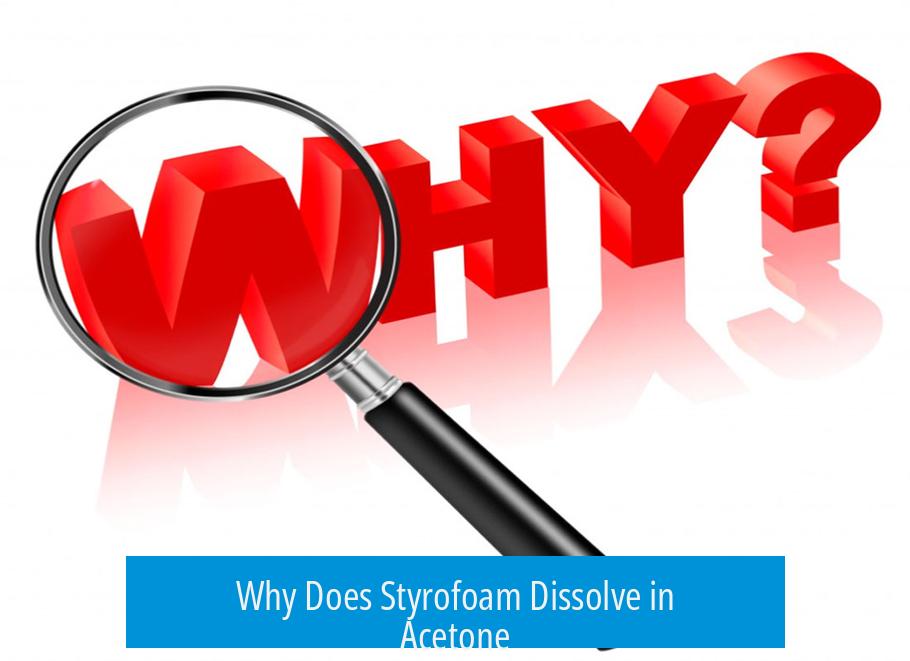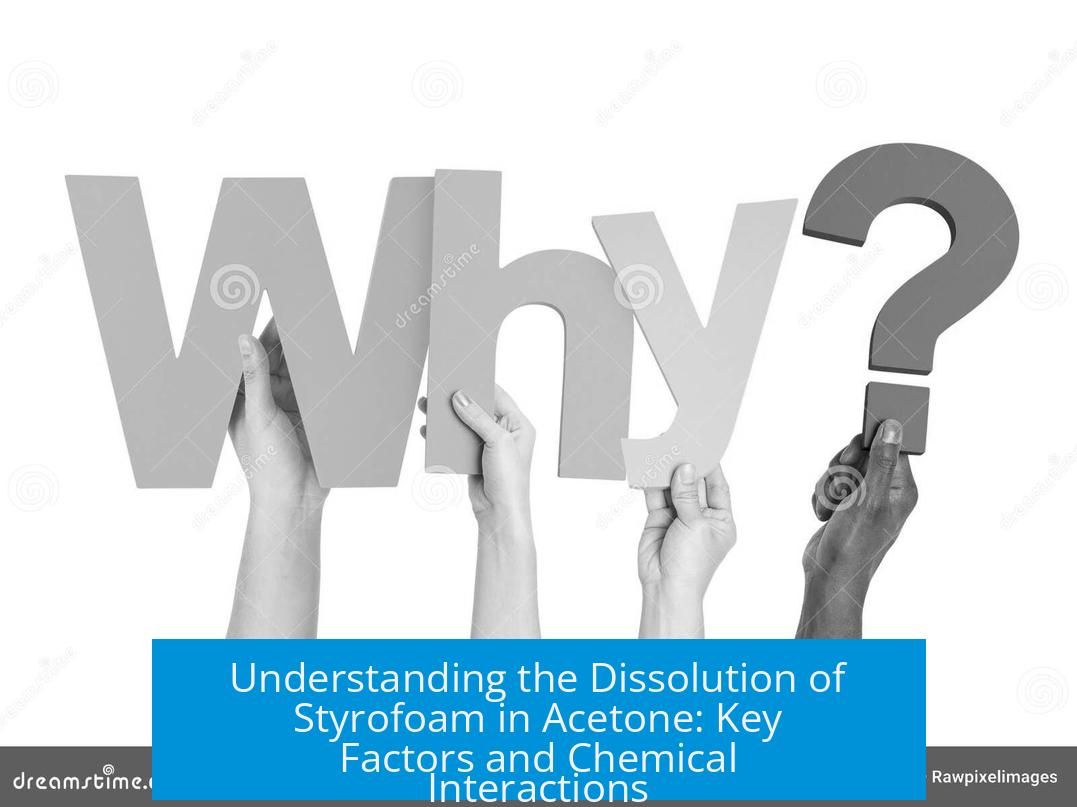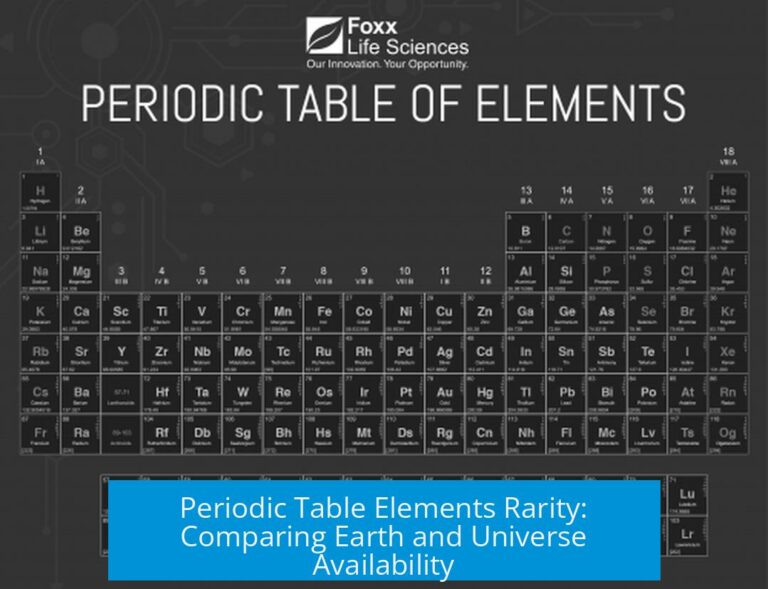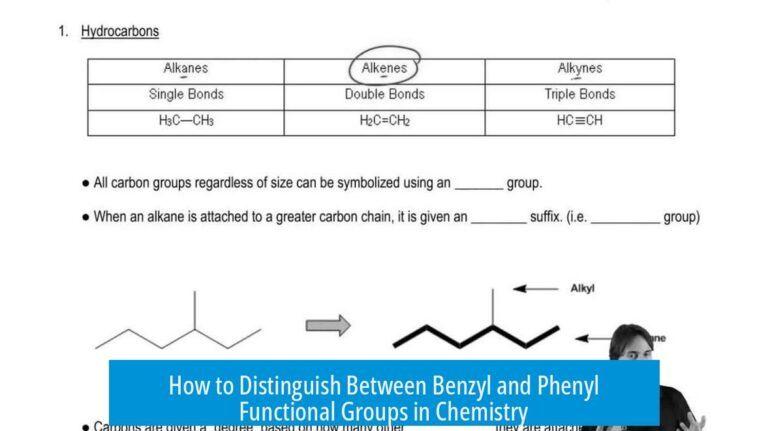Why Does Styrofoam Dissolve in Acetone?

Styrofoam dissolves in acetone because acetone interacts efficiently with the polystyrene polymer chains that make up Styrofoam. The dissolution releases trapped air within the foam and is driven mostly by entropy gains rather than strong energetic favorability.
This article explains the detailed chemistry behind this phenomenon, covering Styrofoam’s composition, acetone’s solvent properties, and the molecular interplay governing solubility.
1. Composition of Styrofoam
Styrofoam is a commercial trademark for a form of expanded polystyrene foam. Fundamentally, it consists of long polystyrene polymer chains inflated with air bubbles. The air creates a light, porous structure.
- Polystyrene is a polymer made from repeating styrene monomers.
- The foam structure results from air being injected during polymerization, trapping gas inside the solid matrix.
- This combination yields a lightweight material with a bulky volume but relatively small actual polymer mass.
When the polystyrene polymer dissolves, the trapped air escapes, shrinking the structure into a small volume of liquid.
2. How Acetone Dissolves Polystyrene Chains
Acetone molecules penetrate the Styrofoam, inserting themselves between polystyrene chains. This interaction causes the solid polymer matrix to break down, releasing the air. The bulk volume reduces dramatically because the foam collapses.
The dissolution involves acetone molecules binding and swelling the polymer by disrupting the weak interchain forces. The polymer chains gain mobility, transitioning from solid to a dissolved state.
“When acetone dissolves polystyrene, it absorbs into the polymer chains, causing the trapped air to be released and the foam to collapse.”
3. Intermolecular Forces: The Principle of “Like Dissolves Like”
Solubility depends on the balance of intermolecular forces between solvent and solute. The phrase “like dissolves like” summarizes this: polar solvents dissolve polar substances; nonpolar solvents dissolve nonpolar substances.
Polystyrene chains primarily exhibit weak Van der Waals forces. They are largely apolar (nonpolar) due to their hydrocarbon backbone.
- Acetone is a polar aprotic solvent, but it also features a notable apolar (nonpolar) character.
- The carbonyl group’s partial positive charge is sterically hindered by methyl groups, reducing strong polar interactions.
- Therefore, acetone’s nonpolar component interacts well with polystyrene’s apolar chains.
Thus, although acetone is polar, it dissolves polystyrene because of compatible nonpolar interactions and partial polarity harmonizing with the polymer’s nature.
4. Energetics: Enthalpy vs Entropy Contributions
Whether a substance dissolves depends on the change in free energy (ΔG), which balances enthalpy (ΔH) and entropy (ΔS) changes:
ΔG = ΔH – TΔS
For polystyrene in acetone:
- The enthalpy change (bond energy differences) is close to zero or slightly unfavorable; acetone and polystyrene’s interaction energies roughly cancel out.
- The dissolution is mainly driven by an increase in entropy — the polymer chains gain freedom to move in solution.
- This is similar to salt dissolving in water, where ion disorder drives dissolution despite some unfavorable enthalpy.
This entropic driving force makes polystyrene dissolve well, even if energetic considerations alone would not strongly favor dissolution.
5. Properties of Acetone as a Solvent
Acetone is the simplest ketone, with a polar aprotic nature. It exhibits unique solvent behavior:
- Miscible with both polar (water) and nonpolar (benzene) solvents.
- Has a partial positive charge on the carbonyl carbon, somewhat shielded by methyl groups.
- Possesses an apolar elemental component from methyl groups.
This combination allows acetone to interact favorably with a diverse range of substances, including polystyrene’s mostly nonpolar polymer chains.
6. Cohesive Energy Density and Solubility Prediction
Chemists quantify intermolecular attractions using cohesive energy density (CED). Polystyrene and acetone have similar CED values, indicating comparable intermolecular interaction strengths.
This similarity suggests good miscibility and predicts acetone’s ability to dissolve polystyrene effectively.
“Their cohesive energy difference values are close. So you can predict polystyrene to be soluble in acetone.”
7. Chemical Nature of Styrene and Analogous Solvents
Styrene is somewhat polar due to a quadrupole moment—the presence of opposing dipoles that cancel out. Styrene monomer and toluene (a common aromatic solvent) dissolve in acetone.
Since polystyrene is a polymerized form of styrene, its solubility behavior resembles that of styrene monomer and other aromatic solvents.
This explains why acetone dissolves polystyrene by involving interactions similar to those with monomeric styrene and toluene.
8. Dissolution of Other Polystyrene Products and Solvents
Acetone dissolves other polystyrene items as well:
- Disposable razors
- Yogurt containers
- Mailers
- CD jewel cases
This effect is not unique to acetone. Many organic solvents—such as gasoline—also dissolve polystyrene effectively. Acetone is a convenient solvent because it is common, volatile, and compatible with many lab and household applications.
Acetone is often found in nail polish removers, offering an accessible way to dissolve polystyrene at room temperature.
Summary of Key Points
- Styrofoam consists of polystyrene polymer chains interspersed with trapped air, accounting for its low density.
- Acetone penetrates and swells polystyrene by disrupting weak intermolecular Van der Waals forces.
- Dissolution releases trapped air, causing rapid volume reduction.
- Acetone exhibits a unique mix of polar and nonpolar characteristics allowing compatibility with polystyrene’s apolar nature.
- Solubility is driven mainly by entropy—the polymer chains gain freedom of motion, increasing disorder.
- Similar cohesive energy densities between acetone and polystyrene support good solubility.
- Other solvents with similar properties (e.g., gasoline, toluene) can also dissolve polystyrene.





Leave a Comment